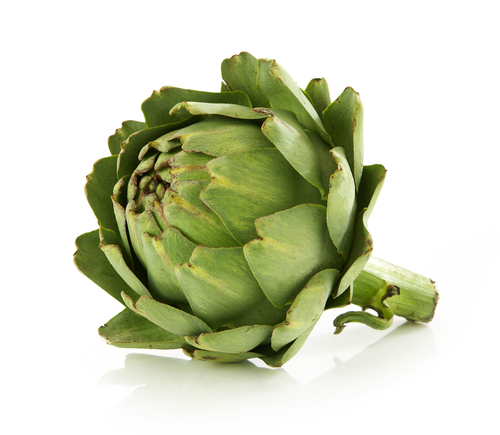The Mysteries Of The Artichoke Unveiled
 I love vegetables of all types, but if I had to choose my favorite, definitely the artichoke would be up there in the top three. Artichokes have an amazing complex flavor, different from any other vegetable. They are also relatives of the thistle, which isn’t surprising when you consider their appearance. The artichoke is native to North Africa and southern Europe and has been cultivated in Italy since Roman times, and really, one has to wonder who the first person was who decided to try eating the “spring thistle” or artichoke.
I love vegetables of all types, but if I had to choose my favorite, definitely the artichoke would be up there in the top three. Artichokes have an amazing complex flavor, different from any other vegetable. They are also relatives of the thistle, which isn’t surprising when you consider their appearance. The artichoke is native to North Africa and southern Europe and has been cultivated in Italy since Roman times, and really, one has to wonder who the first person was who decided to try eating the “spring thistle” or artichoke.
Carciofi grow in fields all across central and southern Italy in fields called carciofaie, and here in Umbria folks plant them is bunches as part of their landscaping, or as hedges up and down the driveways that lead to their homes. Very tender young artichokes are often eaten raw in salads, or preserved in oil, while larger artichokes are most often sauteed, stuffed, fried, or breaded.
In Italy there are three principal varieties of artichokes cultivated, which do not seem to resemble the larger, sturdy, commercial grown varieties available in the States in any way. While living in Italy, one of my favorite memories of spring was being in Venice and tasting my first tiny, purple spring carciofi or artichoke.
After leaving Italy, I believe I often scheduled my return vacations in Italy in the spring just so I could savor those tender specialties again. We just arrived back in Umbria yesterday, and I was very excited to head to one of our local street markets in Marsciano today to buy tiny spring artichokes. I found them sold throughout the market in overflowing baskets, and was very happy to pay 5 euros for 25 artichokes between 3 to 4 inches long.
Italians cook artichokes in almost every conceivable way, including braising, stuffing, stewing, frying, broiling, and grilling to name a few. I am hoping that by explaining how to clean and prepare this misunderstood vegetable, perhaps I can get more people to try making them at home. Unfortunately, fresh, inexpensive artichokes are often difficult to find in North America, but I do encourage you to buy some when you see them in your stores each spring.
There are certain qualities you need to look for when buying artichokes though. Look for tight, compact leaves, no wrinkling, and few brownish blemishes. Choose smaller, rather than the larger artichokes (unless you are planning on stuffing them) and those that feel heavier in your hands rather than light. The smaller variety generally has more edible leaves, and less prickly chokes. It is said if you rub two artichokes together and they squeak, then they are fresh.
Once you get them home, it is time to prepare your artichokes which just may be a daunting proposition if you have never done it before. Having completed it once however, it will be a snap to do in the future. To start, fill a large bowl 3/4 full of water and add to that the juice of one lemon to prevent discoloration.
With a sharp knife, trim off all but 1 inch of the stem of an artichoke. Next, break off and discard the older, tough outside leaves, and continue to do this until you reach the more tender, pale green leaves inside. Next, cut off the top 1/3 of the artichoke and discard. Y
ou can now clean up the ragged areas along the stem with your knife. Unless your artichokes are very small, you’ll need to remove the choke, and can you do this by simply cutting the artichoke in half and scraping out the fuzzy center and prickly leaves. If you require the artichoke whole, or if you plan to stuff them, spread apart the center leaves and with a sharp edged spoon start to scrape out the choke.
Continue until you have removed all the prickly, sharp, center leaves. Rinse your artichoke and place it in the lemon water until you are ready to use.
Deborah Mele